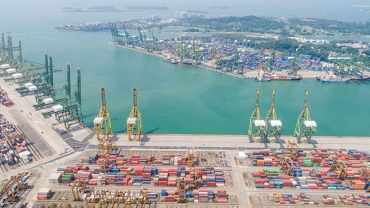
Trust and Check trader
One of the key changes of the EU Customs Refrom is the transformation of the current Authorised Economic Operator (AEO) status with a new designation of Trust and Check trader (T&C).
T&C authorisation vs. AEO certification: what are the main differences?
The T&C authorisation and the AEO certification are both mechanisms designed to facilitate trade and enhance security in the supply chain. However, they are distinct in their requirements and the benefits they confer upon traders.
As a reminder, the AEO certification can be obtained when specific criteria can be fulfilled including a history of compliance with customs regulations, appropriate professional qualifications, financial solvency and a high level of control over their operations and goods flow. This is achieved through effective management systems for commercial and, where necessary, transport records, enabling appropriate customs controls.

Benefits certification
Once granted, this certification can provide the following benefits for the economic operators (among others):
- Globally recognised mark of quality that signals a company’s role as a secure and reliable participant of international trade. It is based on the World Customs Organization’s SAFE Framework of Standards to secure and facilitate global trade.
- Reduced customs inspections, priority treatment if selected for inspection and the possibility of simplified customs procedures.
According to the currently available draft documents underlying the EU customs reform project, the T&C Authorisation will envisage the following (among others):
- The T&C status requires the economic operator to transmit real-time data on goods movements from its IT system to the EU Customs Data Hub, a central platform for customs supervision and risk management.
- The T&C status grants the economic operator several facilitations, such as providing data and documents after the release of the goods, performing certain controls and releasing the goods themselves, determining and deferring the customs debt periodically and avoiding transit formalities for goods entering or exiting the customs territory.
Transition from AEO to T&C:
While current AEOs have a foundational level of compliance and systems that may give them a transitional advantage, it is not automatic that an AEO will become a T&C trader.
AEOs will need to meet the additional requirements specific to the T&C approach, particularly the implementation of an electronic system capable of interacting with customs systems for real-time data exchange. The transition to T&C status may require investment in technology and processes to meet the new standards of data provision and interaction with customs authorities.
In a nutshell, the T&C authorisation represents an evolution of this concept, introducing more stringent requirements and offering greater facilitation benefits. AEOs will not automatically become T&C traders; they must actively meet the additional criteria to qualify for this advanced status. The complexity of implementing the T&C requirements is beyond a simple upgrade and involves a significant commitment to enhancing systems and processes for real-time data sharing and analysis.
Points of attention
However, the T&C status also poses some challenges and costs for the economic operators, such as:
- The T&C status will require importers and exporters to grant the customs authorities access to their electronic systems and to share their commercial information in real time with a central EU Customs Data Hub, which will replace the national customs clearance systems. This will entail significant investments in IT infrastructure and data security, as well as increased compliance risks and obligations for the traders.
- The T&C status will not be available for other economic operators involved in customs activities, such as carriers, warehouse keepers or direct customs representatives, unless they act as indirect customs representatives for importers or exporters. This will result in the loss of their current AEO status and the associated benefits, such as reduced guarantees, priority treatment and mutual recognition with third countries. It will also affect their competitiveness and reputation in the market, as well as their ability to provide services and support to SMEs and non-EU traders.
- The T&C status will also imply the abolition of many existing facilitations for non-T&C traders, such as simplified declarations, declarations by entry in the records and deferred payment of customs debt. This will increase the administrative burden and costs for non-T&C traders, especially SMEs, who may not have the resources or the incentives to apply for the T&C status.
Contact us


Suzanne Bras
Senior Manager Customs & International Trade, PwC Netherlands
Tel: +31 (0)65 395 86 76

















